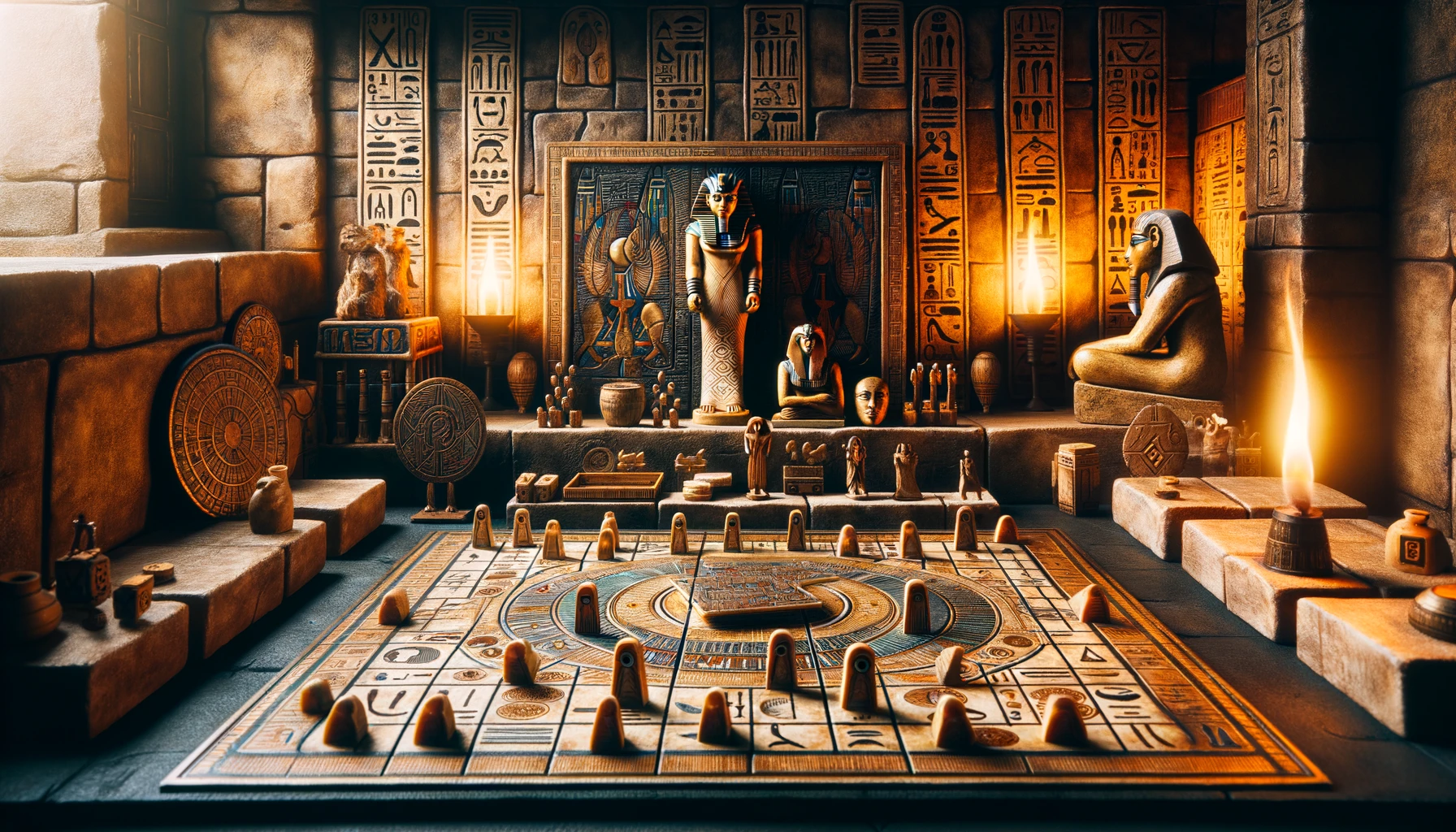Unveiling the Mysteries of Awkauro: The Ancient Egyptian Board Game

Introduction
Awkauro, an ancient Egyptian board game, holds a captivating allure for historians, archaeologists, and gaming enthusiasts alike. This ancient game, believed to have both cultural and spiritual significance, offers insights into the lives and beliefs of the Egyptians. In this article, we delve into the enigmatic history, cultural importance, gameplay theories, and modern relevance of Awkauro. Whether you are an academic, a gamer, or simply a curious reader, this comprehensive exploration of Awkauro will enrich your understanding of this fascinating artifact.
Historical Context of Awkauro
Awkauro’s origins trace back to the Old Kingdom period (2686–2181 BCE) of ancient Egypt. Its presence is documented through various archaeological discoveries, including tomb paintings, inscriptions, and remnants of game boards. These artifacts suggest that Awkauro was widely popular, enjoyed by people across different social strata. The game’s boards, often made from materials like wood, stone, or faience, feature intricate designs and symbols that offer clues about its role in ancient Egyptian society.
Cultural Significance
Awkauro was more than a game; it was an integral part of Egyptian culture and spirituality. Many scholars believe that the game symbolized the journey of the soul through the afterlife. This theory is supported by the discovery of Awkauro boards in tombs, indicating a possible ritualistic or religious use. The game pieces, often carved from ivory, bone, or stone, might have represented deities or spirits, guiding players through the spiritual journey depicted on the board.
The cultural importance of Awkauro is further highlighted by its inclusion in social and communal activities. Festivals, gatherings, and daily life in ancient Egypt likely featured this game, serving as a medium for entertainment, education, and social interaction. Its widespread appeal underscores the game’s role in strengthening community bonds and preserving cultural traditions.
Theories of Gameplay
Despite extensive research, the exact rules and mechanics of Awkauro remain largely speculative. Unlike other ancient games such as Senet, for which partial rules have been deciphered, Awkauro’s gameplay is reconstructed primarily through interpretation and comparison. Some theories suggest that Awkauro was a race game where players moved pieces along a linear track, aiming to reach the end before their opponents. The layout of the board, with its distinct squares or markings, likely dictated movement and strategy.
Another theory posits that Awkauro served as a divinatory tool. In this scenario, the symbols and layout of the game board had esoteric meanings, with the movement of pieces interpreted as messages from the gods. This theory aligns with the game’s frequent association with tombs and afterlife symbolism, suggesting that it may have been used for spiritual guidance and predictions.
Ongoing Research and Technological Advancements
The study of Awkauro continues to evolve with advancements in technology. Modern tools such as 3D scanning and imaging allow researchers to examine game boards and pieces in unprecedented detail. These technologies help uncover subtle features and patterns that were previously unnoticed, providing new insights into the game’s design and use.
Interdisciplinary collaboration plays a crucial role in understanding Awkauro. Historians, archaeologists, anthropologists, and game theorists work together to piece together the game’s history and mechanics. This collaborative approach combines different perspectives and expertise, leading to more comprehensive and accurate interpretations.
Public interest in ancient board games has also spurred renewed research efforts. Museums and educational institutions often host exhibitions, workshops, and lectures on ancient games like Awkauro, raising awareness and fostering appreciation for these cultural artifacts. These initiatives not only preserve historical knowledge but also inspire future generations of researchers and enthusiasts.
Modern Relevance and Influence
Awkauro’s legacy extends into modern times, influencing contemporary board games and gaming culture. The fascination with ancient games has led to the revival and reinterpretation of traditional gameplay mechanics in modern game design. Elements such as strategic movement, symbolic representation, and competitive play, inherent in Awkauro, continue to resonate with modern gamers.
Several board game designers have drawn inspiration from Awkauro, creating games that incorporate ancient themes and aesthetics. These modern adaptations honor the past while introducing innovative gameplay elements, bridging the gap between ancient and contemporary gaming. The enduring appeal of Awkauro underscores the timeless nature of games as a form of human expression and interaction.
Educational Value
Awkauro offers significant educational opportunities, providing insights into ancient Egyptian history, culture, and society. Studying the game allows students and researchers to explore broader themes such as ritual practices, social dynamics, and technological advancements in ancient civilizations. It also encourages critical thinking and problem-solving skills as scholars attempt to reconstruct and interpret the game’s rules and mechanics.
In educational settings, Awkauro can be used as a tool to engage students in hands-on learning experiences. Recreating the game and playing it in classrooms or workshops helps students connect with history in a tangible and interactive way. This approach fosters a deeper appreciation for ancient cultures and highlights the enduring nature of human creativity and ingenuity.
Preservation and Conservation Efforts
Preserving the physical artifacts of Awkauro is essential for ensuring that future generations can study and appreciate this ancient game. Conservation efforts focus on protecting game boards, pieces, and related artifacts from deterioration and damage. This involves careful handling, storage in climate-controlled environments, and, when necessary, restoration work to repair and stabilize fragile items.
Digital preservation is another critical aspect of conservation. High-resolution scans and 3D models of Awkauro artifacts enable researchers and the public to access and study these items without risking physical harm. Digital archives also facilitate global collaboration, allowing scholars from different parts of the world to share data and insights.
Conclusion
Awkauro stands as a testament to the ingenuity and cultural richness of ancient Egypt. This enigmatic board game, with its mysterious rules and profound significance, continues to captivate scholars and enthusiasts alike. Through ongoing research, technological advancements, and interdisciplinary collaboration, we are gradually uncovering the secrets of Awkauro, enriching our understanding of the past and its enduring legacy.
As we continue to explore and interpret Awkauro, we not only honor the achievements of ancient civilizations but also draw inspiration for the future. The study of Awkauro reminds us of the universal nature of games and their power to connect people across time and space. Whether as a tool for divination, a means of social interaction, or a source of entertainment, Awkauro embodies the timeless spirit of human curiosity and creativity.
By delving into the mysteries of Awkauro, we gain a deeper appreciation for the cultural and historical contexts that shaped ancient Egyptian society. This knowledge enhances our understanding of human history and highlights the importance of preserving cultural heritage for future generations. The journey to uncover the full story of Awkauro is ongoing, promising new discoveries and insights that will continue to enrich our collective knowledge.















Leave a Reply